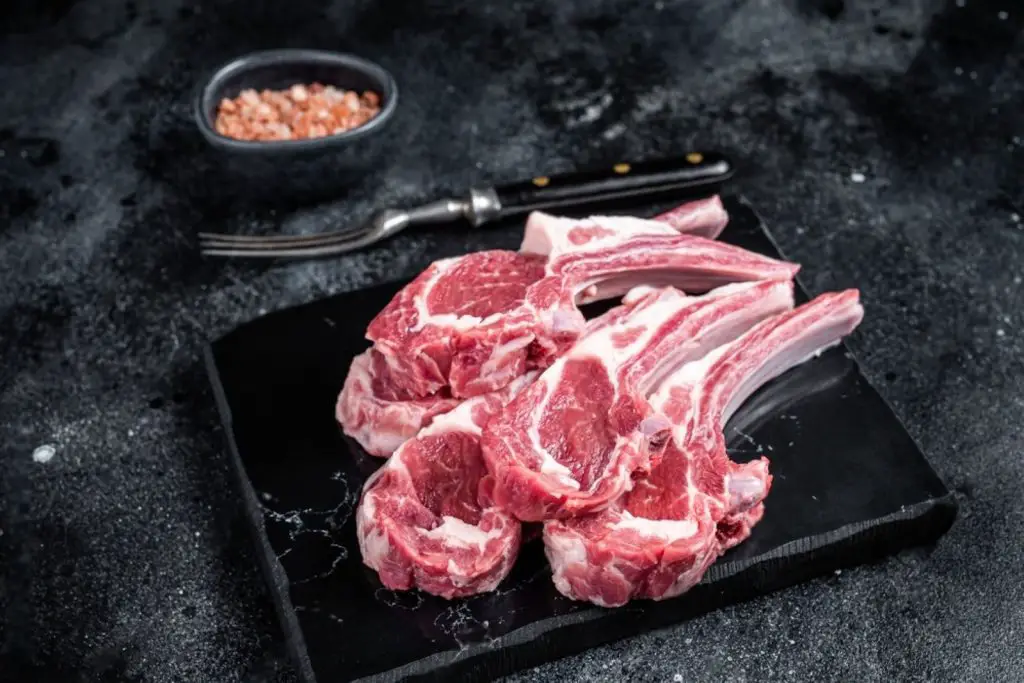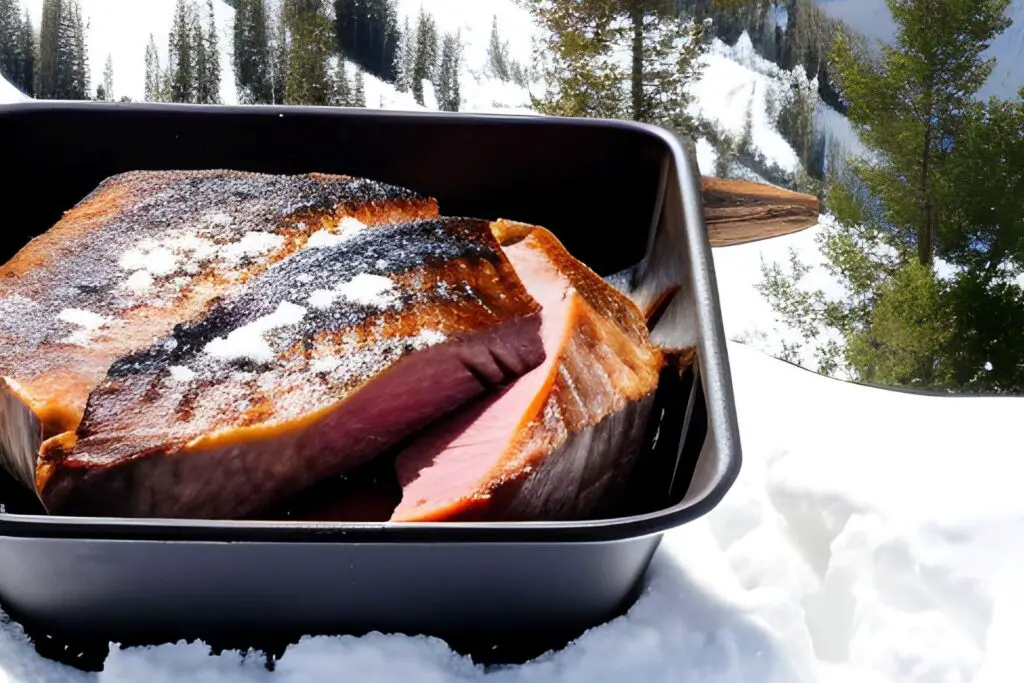
Chicken tenderloins, the lean and tender strips of meat attached to the underside of chicken breasts, are a versatile protein option that can be used in various dishes. These boneless and skinless cuts offer a tender and juicy texture, making them a favorite among both home cooks and chefs. Whether marinated, grilled, baked, or stir-fried, chicken tenderloins provide a delicious foundation for a wide range of recipes. However, if you have an excess supply of chicken tenderloins or want to prepare them in advance for easy meal planning, freezing is a convenient option. Freezing chicken tenderloins not only helps to preserve their freshness but also allows for long-term storage without compromising on taste or texture. In this guide, we will explore the proper techniques and tips for freezing chicken tenderloins, including packaging and storage guidelines, so you can have a readily available supply of this versatile protein whenever you need it. Join us as we delve into the art of freezing chicken tenderloins and unlock the convenience of having this delicious ingredient.
Here are the simple steps to freeze chicken tenderloins:
Step 1: Select Fresh Chicken Tenderloins
Choosing fresh chicken tenderloins is crucial for ensuring the quality and safety of the frozen product. Here’s why this step is important and what to look for when selecting chicken tenderloins:
- Freshness is key: When freezing chicken tenderloins, it’s essential to start with fresh meat. Fresh chicken has a better flavor and texture compared to chicken that is nearing its expiration date or showing signs of spoilage. By selecting fresh tenderloins, you can maintain the quality of the chicken even after freezing.
- Appearance matters: Look for chicken tenderloins that have a pinkish color. Pink meat indicates that the chicken is fresh and hasn’t been sitting for too long. Avoid tenderloins with any discoloration, such as gray or brown patches, as these may be signs of spoilage.
- Texture and firmness: Gently press the chicken tenderloins with your fingers. They should feel firm and spring back when touched. If the tenderloins feel excessively soft or mushy, it could be an indication of spoilage or improper handling.
- Odor check: Give the chicken tenderloins a sniff. Fresh chicken should have a neutral or slightly sweet scent. If you detect a strong, unpleasant odor or a sour smell, it’s a sign that the chicken is no longer fresh and should not be used.
- Avoid sliminess: A slimy texture on the chicken tenderloins is a clear indicator of spoilage. If the meat feels slimy to the touch, it’s best to discard it and choose a different batch of tenderloins.
By carefully selecting fresh chicken tenderloins, you lay the foundation for a delicious and safe frozen product. Ensuring that the chicken is of high quality before freezing it will help maintain its flavor and texture when it’s time to use it in your favorite recipes.
Step 2: Wash and Trim the Tenderloins
Washing and trimming the chicken tenderloins before freezing is an essential step to ensure cleanliness and remove any unwanted elements. Here’s why it’s important and how to properly wash and trim the tenderloins:
- Removing dirt and debris: Before freezing the chicken tenderloins, it’s crucial to rinse them under cold running water. This helps to remove any dirt, residue, or contaminants that might be present on the surface of the meat. Washing the tenderloins helps maintain their overall cleanliness and hygiene.
- Patting dry: After washing the chicken tenderloins, it’s important to thoroughly pat them dry using paper towels. Excess moisture on the surface of the meat can lead to the formation of ice crystals during freezing, which can affect the quality and texture of the tenderloins. Drying the tenderloins helps remove any remaining water and ensures better preservation when frozen.
- Trimming excess fat and connective tissue: Before freezing, it’s a good practice to trim off any excess fat or connective tissue from the chicken tenderloins. Excess fat can become rancid during freezing and affect the taste and texture of the meat. Removing connective tissue helps improve the tenderness of the tenderloins when cooked. Use a sharp knife to carefully trim away any visible fat or tough membranes.
By washing the chicken tenderloins, you eliminate any surface contaminants, and by patting them dry, you prevent excess moisture during freezing. Trimming away excess fat and connective tissue enhances the quality and taste of the tenderloins. These simple steps contribute to better preservation and ensure that your frozen chicken tenderloins maintain their optimal texture and flavor when it’s time to use them.
Step 3: Arrange the Tenderloins to Freeze
Properly arranging the chicken tenderloins before freezing is important to prevent them from sticking together and allow for efficient freezing. Here’s why this step is crucial and how to arrange the tenderloins effectively:
- Preventing sticking together: When chicken tenderloins freeze, there’s a risk that they might stick together if they come into contact with each other. This can make it difficult to separate them when you want to use only a portion. By arranging the tenderloins in a single layer with enough space between them, you can minimize the chances of them sticking together during freezing.
- Using a baking sheet or tray: Place the chicken tenderloins on a baking sheet or tray that has been lined with parchment paper. The parchment paper prevents the tenderloins from sticking to the surface and makes it easier to remove them later. The baking sheet or tray provides a flat and stable surface to support the tenderloins during freezing.
- Single layer arrangement: Lay the chicken tenderloins in a single layer on the baking sheet or tray. Avoid stacking or overlapping them, as this can lead to uneven freezing and hinder the individual freezing process. Make sure there is sufficient space between the tenderloins so that air can circulate around them, allowing for uniform freezing.
- Efficient freezing: By arranging the tenderloins in a single layer, you promote faster and more efficient freezing. This helps to maintain the quality and texture of the chicken tenderloins. If the tenderloins were piled together, it would take longer for them to freeze completely, which could result in the formation of larger ice crystals and potential loss of quality.
Properly arranging the chicken tenderloins on a baking sheet or tray ensures that they freeze individually and remain separate, making it easier to retrieve and use only the desired amount when needed. This step contributes to the overall quality and convenience of the frozen chicken tenderloins.
Step 4: Flash-Freeze the Tenderloins
Flash-freezing is a crucial step in the freezing process of chicken tenderloins. This rapid freezing technique helps maintain the texture and quality of the tenderloins. Here’s why flash-freezing is important and how to perform it effectively:
- Preventing large ice crystal formation: When food freezes slowly, it can result in the formation of large ice crystals. These large ice crystals can damage the cell structure of the tenderloins, leading to a loss of texture and juiciness upon thawing. Flash-freezing, on the other hand, promotes the formation of smaller ice crystals, which minimizes cell damage and preserves the quality of the tenderloins.
- Rapid freezing process: To flash-freeze the chicken tenderloins, place the baking sheet or tray with the arranged tenderloins in the freezer. Make sure there is enough space around the tray for proper airflow. Allow the tenderloins to freeze for about 1 to 2 hours or until they are partially frozen. The exact freezing time may vary depending on the thickness and quantity of the tenderloins, as well as the temperature of your freezer.
- Preserving texture and quality: Flash-freezing helps to lock in the moisture and minimize the formation of ice crystals within the tenderloins. This preservation technique maintains the natural texture, juiciness, and tenderness of the chicken, ensuring a more enjoyable eating experience after thawing and cooking.
By flash-freezing the chicken tenderloins, you optimize their freezing process and minimize the risk of cell damage. This step is essential for preserving the texture and overall quality of the tenderloins, allowing you to enjoy delicious and succulent chicken even after freezing.
Step 5: Package and Seal
Proper packaging and sealing of the partially frozen chicken tenderloins are crucial to maintain their quality and protect them from freezer burn during storage. Here’s why this step is important and how to package and seal the tenderloins effectively:
- Preserving quality: Packaging the chicken tenderloins in airtight containers or freezer bags helps to create a barrier against air and moisture, which are the main causes of freezer burn. Freezer burn can negatively affect the taste, texture, and overall quality of the chicken tenderloins. By sealing them properly, you can extend their shelf life and ensure that they remain in optimal condition for future use.
- Choose appropriate containers: Select airtight freezer bags or containers specifically designed for freezing food. These containers should be durable, leak-proof, and capable of withstanding freezing temperatures without becoming brittle or cracking. It’s recommended to use freezer bags made of thick, heavy-duty plastic or rigid freezer-safe containers.
- Transfer when partially frozen: It’s important to transfer the chicken tenderloins into the packaging when they are partially frozen. This ensures that they are firm and less likely to get squished or lose their shape during the packaging process. The partially frozen state also helps to prevent excess moisture from accumulating inside the packaging.
- Remove excess air: Before sealing the bags or containers, remove as much air as possible to minimize the risk of freezer burn. Air contains moisture, which can lead to ice crystal formation and degrade the quality of the tenderloins. Squeeze out the air from the bags or containers as you seal them tightly. Vacuum sealers can also be used to remove air more effectively.
By properly packaging and sealing the partially frozen chicken tenderloins, you create a protective environment that helps preserve their quality and flavor during storage. This step ensures that you can enjoy delicious, freezer-burn-free chicken tenderloins whenever you’re ready to use them.
Step 6: Label and Date
Labeling and dating the packages of frozen chicken tenderloins is an important step to help you keep track of their storage time and ensure proper rotation. Here’s why this step is crucial and how to label and date the packages effectively:
- Tracking storage time: When freezing chicken tenderloins, it’s important to keep track of how long they have been in the freezer. This allows you to maintain the quality and freshness of the tenderloins and helps you use them within the recommended storage duration. By labeling and dating the packages, you can easily identify the oldest tenderloins and ensure that they are used first.
- Contents identification: Labeling the packages with the contents (chicken tenderloins) makes it easier to identify them at a glance. This is especially useful if you have multiple types of frozen foods in your freezer. Clear labeling ensures that you can quickly find the desired packages without having to open each one.
- Using a permanent marker: It’s best to use a permanent marker to label the packages. This ensures that the labels remain legible and don’t fade or smudge over time. Write the contents and date directly on the bags or containers in a visible location.
- Date of freezing: Include the date when the chicken tenderloins were frozen on the label. This helps you keep track of how long the tenderloins have been in the freezer. It’s recommended to write the month, day, and year for clarity.
- Proper rotation: When it’s time to use the chicken tenderloins, follow the principle of first in, first out (FIFO). This means using the oldest packages first to ensure that no tenderloins stay in the freezer for an extended period. By adhering to proper rotation, you can maximize the quality and flavor of your frozen chicken tenderloins.
Labeling and dating the packages of frozen chicken tenderloins helps you stay organized and ensures that you consume them within their optimal storage period. This step promotes food safety and prevents wastage by using the oldest tenderloins first, allowing you to enjoy delicious and well-preserved chicken tenderloins every time.
Step 7: Store in the Freezer
Proper storage of the sealed bags or containers of chicken tenderloins in the freezer is crucial for maintaining their quality and ensuring food safety. Here’s why this step is important and how to store the chicken tenderloins effectively:
- Maintaining quality: The freezer is a controlled environment that helps preserve the quality and freshness of frozen foods. Proper storage ensures that the chicken tenderloins remain at a consistently low temperature, which prevents bacterial growth and enzymatic activity that can lead to spoilage.
- Efficient airflow: When placing the sealed bags or containers of chicken tenderloins in the freezer, ensure that there is enough space around them to allow for efficient airflow. Proper airflow promotes uniform freezing and helps maintain the desired texture and flavor of the tenderloins.
- Ideal storage location: Store the chicken tenderloins in the coldest part of the freezer, such as the back or bottom shelf. These areas tend to have more stable and colder temperatures, which are essential for keeping the tenderloins well-frozen. Avoid storing the tenderloins in the freezer door, as it experiences more temperature fluctuations due to frequent opening and closing.
- Protection from freezer burn: Make sure the sealed bags or containers are positioned in a way that minimizes the risk of them being crushed or damaged by other items in the freezer. Protecting the packages from physical damage helps prevent the exposure of the tenderloins to air and potential freezer burn.
- Organized storage: Keep the freezer organized by arranging the packages in a neat and orderly manner. This allows for easy access to the chicken tenderloins and helps you locate specific packages without disrupting the others.
By storing the sealed bags or containers of chicken tenderloins properly in the freezer, you create an environment that preserves their quality and extends their shelf life. Proper airflow, ideal storage location, and organized placement contribute to maintaining the texture, flavor, and overall freshness of the frozen tenderloins until you’re ready to use them.
How long can chicken tenderloin last in the freezer?
Chicken tenderloins can last in the freezer for up to 9 to 12 months when properly stored. To maintain their quality, store the tenderloins in airtight containers or freezer bags to prevent freezer burn. It’s important to label the packages with the freezing date and use the oldest tenderloins first for optimal freshness.
Other related questions
How do you defrost chicken tenderloin?
There are three safe methods to defrost chicken tenderloins:
Refrigerator:
Place the frozen tenderloins in a leak-proof plastic bag and thaw them in the refrigerator for several hours or overnight. This method ensures a slow, even thawing process.
Cold Water:
Submerge the frozen tenderloins in a sealed plastic bag in cold water. Change the water every 30 minutes until they are thawed. This method is quicker than the refrigerator method but requires more active monitoring.
Microwave:
Use the defrost setting on the microwave to thaw the tenderloins. Follow the microwave manufacturer’s instructions and use caution to prevent uneven cooking or partial cooking during the thawing process.
Can you refreeze chicken tenderloin?
Refreezing chicken tenderloins is generally not recommended for food safety reasons. Once thawed, bacteria can multiply, and refreezing can lead to further deterioration in quality and increase the risk of foodborne illnesses. It is best to cook the thawed chicken tenderloins and consume them within a safe time frame rather than refreezing them.
How do I know if the chicken tenderloin has gone bad after being frozen?
To determine if frozen chicken tenderloins have gone bad, look for signs of spoilage such as an off smell, unusual texture, or discoloration. If the tenderloins emit a sour or unpleasant odor, have a slimy texture, or display gray or brown patches, they may be spoiled. Trust your senses and if in doubt, it is best to discard the chicken tenderloins to avoid the risk of foodborne illness.
Can I season chicken tenderloins before freezing them?
Yes, you can season chicken tenderloins before freezing them. Seasoning the tenderloins prior to freezing can enhance their flavor and make them more convenient to use in future meals. You can apply dry seasonings directly to the tenderloins or marinate them in a flavorful liquid. Just ensure that the seasoning is evenly distributed and properly sealed with the tenderloins before freezing for optimal flavor absorption.
Can I freeze chicken tenderloins with bones?
Yes, you can freeze chicken tenderloins with bones. However, it’s important to note that bones can affect the freezing and thawing process. Freezing bone-in chicken tenderloins may require longer freezing and thawing times compared to boneless tenderloins.








